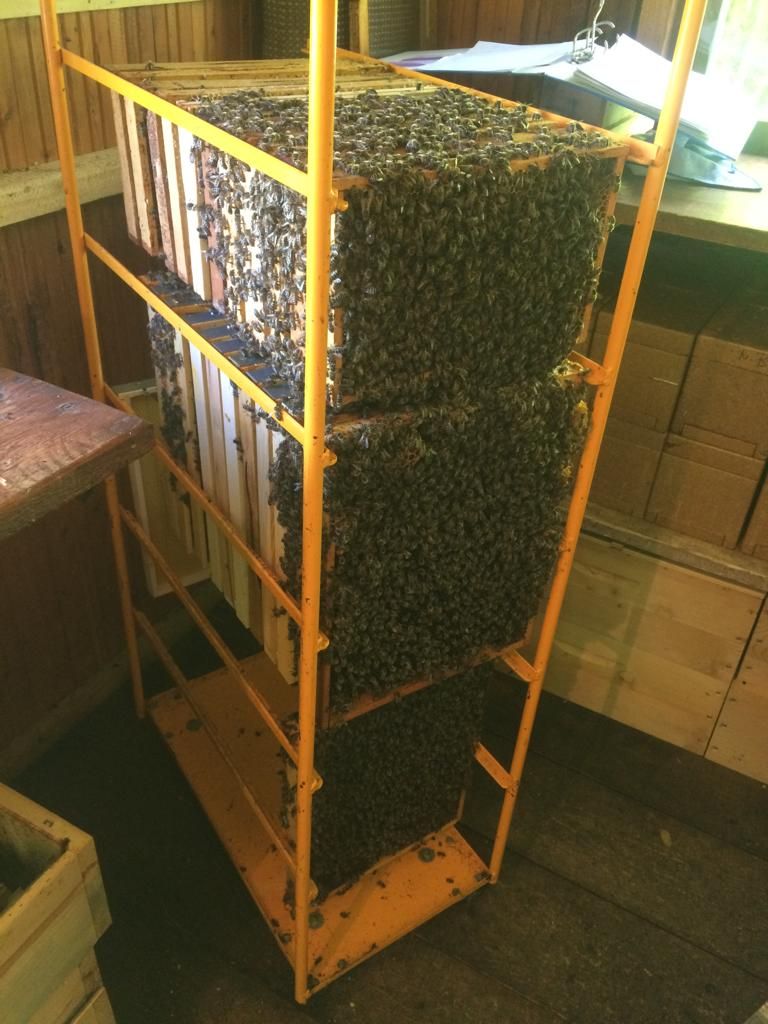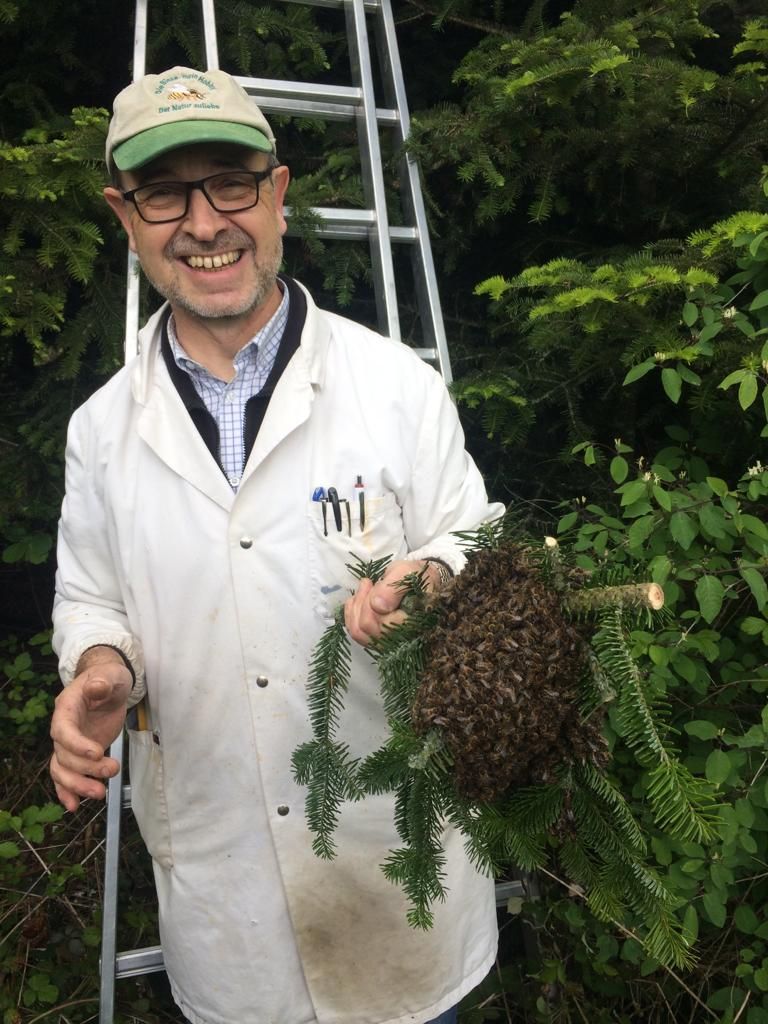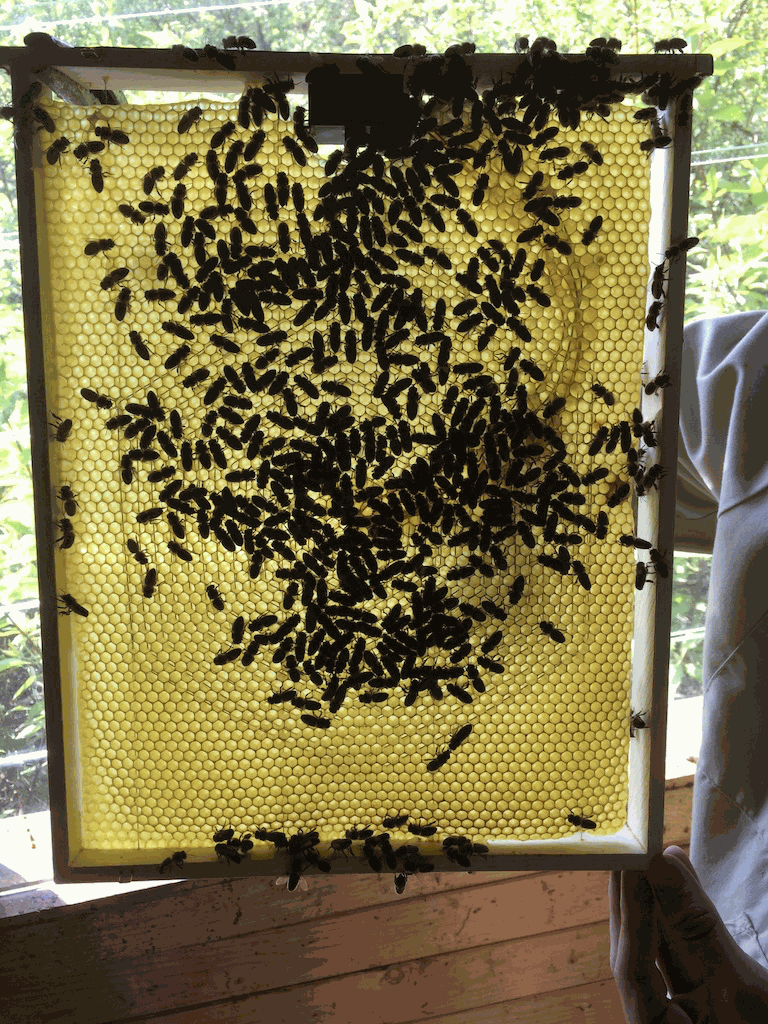Springtime is swarming time. When the flowers begin to bloom, it is the most beautiful, but also the most intense time of the year for every beekeeper, particularly at the beginning of the season in May and June when the bees are at their most active. Capturing a swarm is a great way to multiply your colonies without a lot of hassle or added costs. In this article we will show you how to introduce a swarm to Vatorex heating combs, so it can be treated against varroa automatically and without the need for chemicals.
Why do bees swarm?
Bees have a natural instinct to swarm. In spring, the bee population expands rapidly as the queen will lay up to 2000 eggs per day.

The rapid growth of the colony causes crowding and due to the increasing size of the colony, the queen might not be able to abstract enough queen substance for the whole hive. (Read more about this in our blog post the communication of the bees.) The colony will then start to raise several queen cells, which are fed royal jelly. Usually on the 9th day after laying eggs in the queen cells, the old queen will leave the hive with a portion of bees – often several thousand workers. In doing so, the migrating swarm makes room for the remaining bees and the new queen to continue the cycle.
For beekeepers, swarms are a double-edged sword. On the one hand, a migrating swarm has a negative influence on the strength and honey yield of the ‘mother colony’. On the other hand, captured swarms are an easy way to increase the numbers of colonies. With relatively little effort, you can re-populate your empty bee boxes and expand your beekeeping.

Introducing swarms to Vatorex heating combs
Locating and catching swarms
Migrating swarms initially gather in the immediate vicinity of the colony. During the spring months it is worthwhile to stop by your beehives and search for swarms at popular collection points like branches, fences or the eaves of buildings. A “swarm catcher” can also be useful in helping to lure the swarming bees to a visible and easily accessible place.
We have summarised tips for capturing swarms of bees in the article «Willis tips» (point 3: swarms). After the swarm has been captured and has spent 24 hours in «cellar confinement», the bees can be introduced to new wax foundations.
Introducing a swarm
Place the bees in your hive. To enable a great start, add wax foundations and feed* the swarm. The following two rules apply:
Wax foundations: 4 wax foundations per kilogram of bees are required. An additional foundation is added each week, if the bees are building wax in a uniform way.
Feeding: We recommend feeding with 2x 2 litres of liquid feed in the first few days.
* In principle, feeding is not absolutely necessary. However, too little feed – for example during periods of rain – is very bad for the development of the colony and the building of the honeycombs.
Why it is worthwhile to introduce the swarm to Vatorex heating combs
With the Varroa solution from Vatorex, bee colonies are treated fully automatically and repetitively with heat against the Varroa mite. In a temperature range between 39 – 42 °C the mites die, while the bees survive unscathed. The heat comes from the within the comb, through heating wires embedded directly in the wax, like “floor heating for the bee brood”. The Varroa solution is available for all comb types.

Advantage 1: Fast honeycomb expansion
Swarms build onto new wax foundations quickly. If there is enough food, the foundations are fully built within a few days.
Advantage 2: Entire breeding area on heating honeycombs
Since the entire swarm is placed on new wax foundations, the entire breeding area quickly expands across the heating honeycombs. This is an important prerequisite to increase the effectiveness of the heat treatment and thus help the colony to maintain a deep varroa load.
Advantage 3: Deep Varroa exposure during the whole breeding period
Since bees naturally pause the breeding cycle before swarming, the varroa count is relatively low when the swarm is introduced to the new hive. However, as the varroa mite reproduces quickly during the growth of the population, the threat of rapid infestation is high. The varroa solution keeps varroa numbers low throughout the entire cycle.
Information about the Varroa solution from Vatorex
All important information about the Vatorex Varroa solution can be found on the products page. If you have any questions, please do not hesitate to contact us by e-mail: hello@vatorex.ch or phone: +41 52 338 23 18.
Varroa Kit
Like ‹floor heating for the bee brood›, our patented heating coils are embedded directly into beeswax foundations and maintain a temperature of 42° Celsius for three-hour periods. This provides effective killing power against varroa and the viruses they carry, without causing harm to the bees or brood.
CHF 19.90 now,
then CHF 16.00 / month for 24 months + CHF 3.90 / month